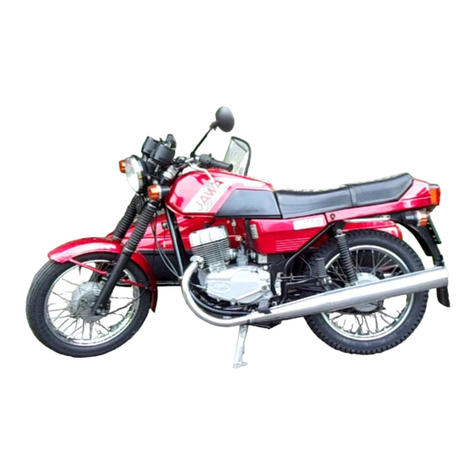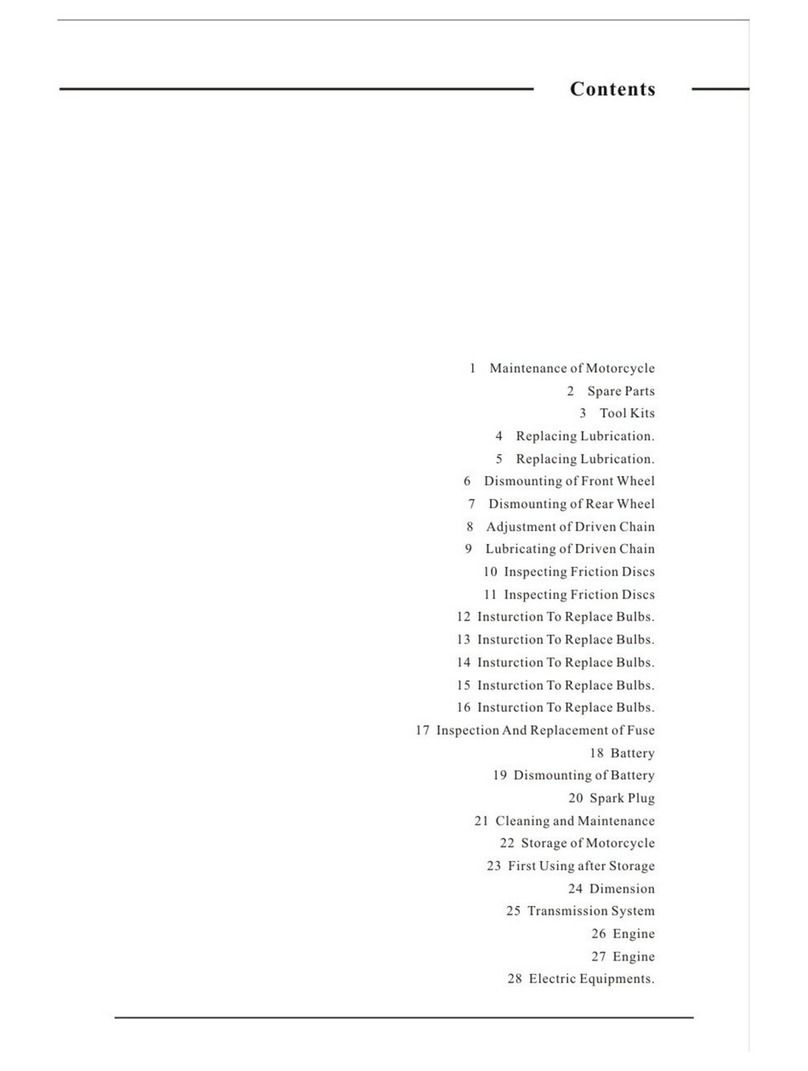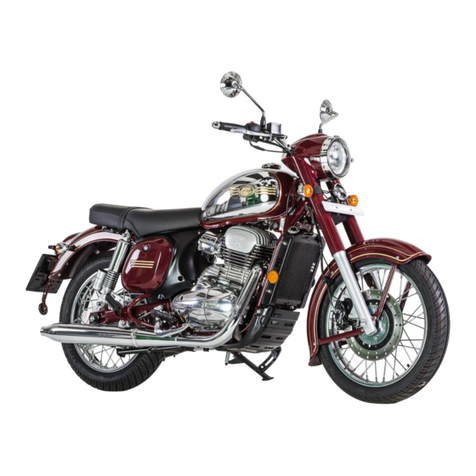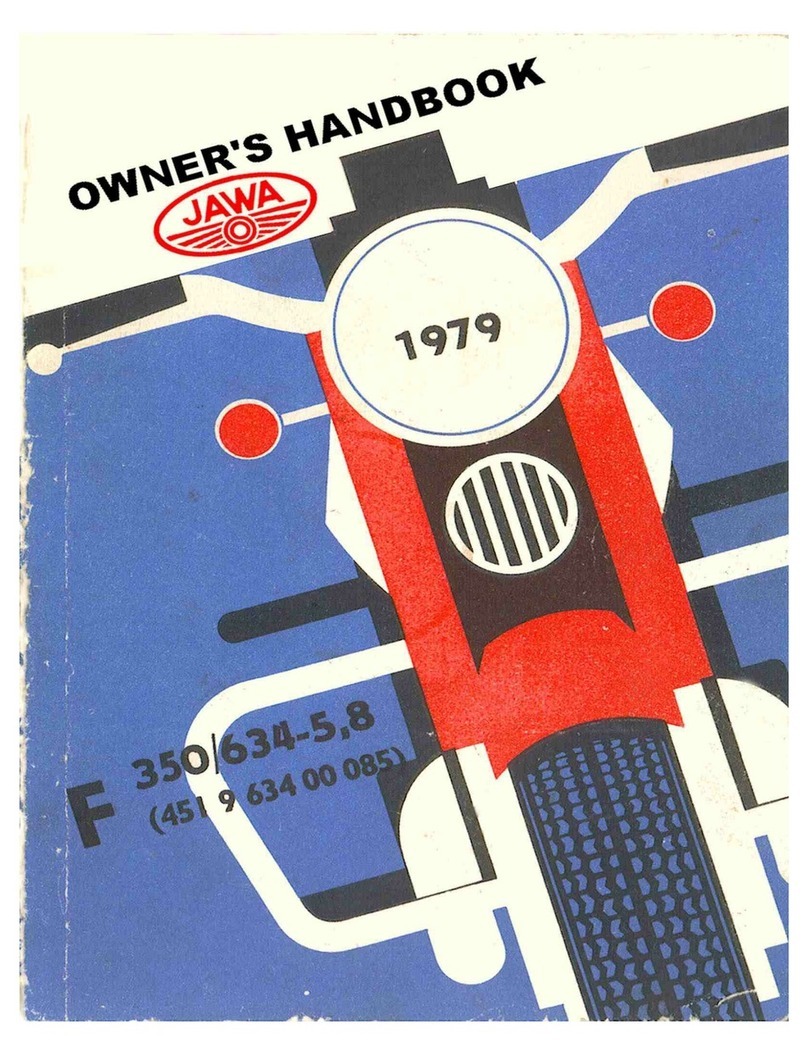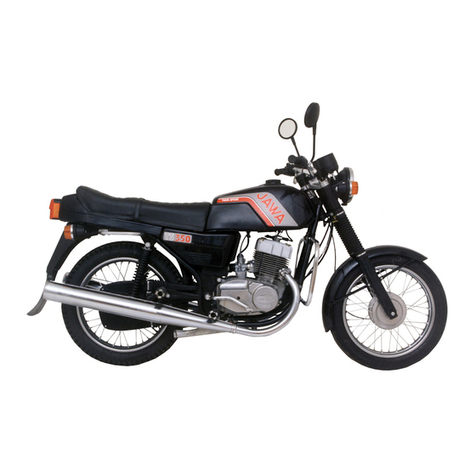www.jawamoped.com
WORKSHOP MANUAL
moped model 210
This workshop manual is intended primarily
for all repair shops and their workers
concerned with repairs of our model 210
moped. It does not contain servicing jobs
and repairs described in the Rider's Manual
but only repairs for which special assembly
tools and jigs are required.
The purpose of this manual is to facilitate
the work of the repairmen and to improve
servicing of our products. Any changes and
deviations from standard procedures will be
announced in our Service Bulletins.
ZVL concern, Povazske strojarne
Klementa Gottwalda works
sales and technical service department
CONTENTS
I. Moped specifications
II. General technical data
1. Assembly tools and jigs
2. Moped lubrication — Lubrication Chart
3. List of bearings, sealing rings and bushes
4. Engine torque transmission — diagram
and description
III. Engine
1. Removing engine from frame
2. Removing cylinder head, cylinder and
piston
3. Grading of cylinders and pistons
4. Clutch dismantling
5. Carburettor
6. Crankshaft
IV. Frame
1. Front, telescopic fork
2. Front, and rear wheel
3. Rear wheel telescopic suspension
V. Electrical equipment
1. Alternator
2. Ignition system
3. Wiring diagram
4. Diagnosing electronic ignition defects
VI. Causes of defects and their removal
I. MOPED SPECIFICATIONS
Engine type air cooled, two-stroke single-cylinder unit
Swept volume 49 cc
Cylinder bore x piston stroke 39 x 41 mm
Engine power output 1.75 kW at 5,000 rpm ± 8 %
Clutches automatic, dry, centrifugal
Gearbox two-speed unit
Engine to rear wheel 1st. speed overall ratio --- 1 : 24.4231
transmission ratio 2nd. speed overall ratio --- 1 : 13.7305
Primary transmission indented belt
Secondary transmission link chain
Pedal drive transmission ratio1 : 0.692
Pedal-actuated starting gear overall ratio 1 : 0.0504
Front suspension telescopic fork without shock absorbers
60 mm stroke
Rear suspension telescopic suspension units without shock
Absorber -- 60 mm stroke
Brakes internal expanding shoe -- brakes controlled
by levers on handlebars
Brake dimensions 85 x 20 mm
Tyres 2¼ x 16"
Wheels 1.60” (WH1) x 16”
Inflation pressures - front tyre 196 kPa (2 atm) [ 28 psi ]
- rear tyre 245 kPa (2.5 atm.) [ 36 psi ]
Moped dry weight 51 kg
Moped running weight 54 kg
Road speed - sustained 35 km/hr.
- maximum 40 km/hr ± 5 %
Fuel tank filling capacity 4 litres
Fuel reserve 0,7 litres
Maximum climbable gradient
with rider weighing 75 kg 25 %
Noise 70 decibels
Ignition system 6 volt, contactless with semiconductor
elements
Spark plug PAL N 7 R [ Champion L89CM L85 L86 ]
[ NGK B6HS Bosh W7AC ]
Headlamp 6 v 21 w
Tail lamp 6 v 5 w
Speedometer lighting 6 v 2 w
Fuel consumption 1.8 litres/100 km at 27 km/hr
Load capacity, maximum 90 kg including 5 kg luggage on carrier
Note:
When exceeding the load capacity, it is necessary to decrease the
maximum speed proportionally
ZVL model 210 Workshop Manual Pages 1, 2 & 3 jkw
